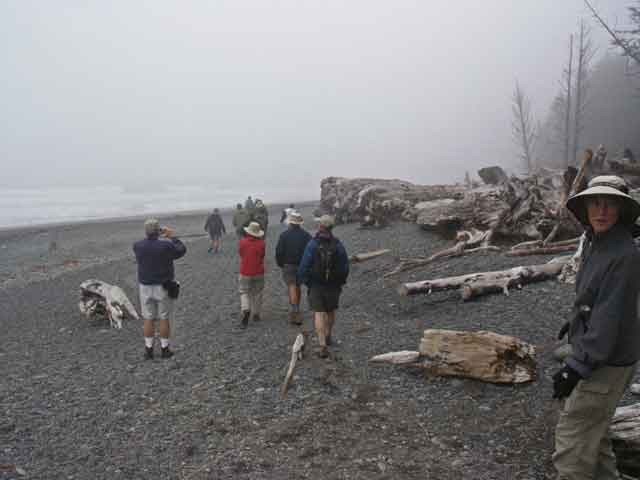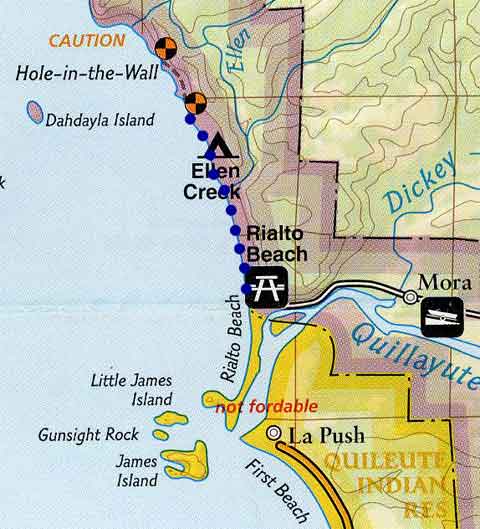
Rialto beach in the fog.

Today dawned foggy and moist, same as the day before. After breakfast we loaded the vans with our luggage and headed northward to Rialto Beach.

We walked north on the beach for about 1.5 miles, but when we approached the "Hole-in-the-Wall", the tides had covered the beach and the path were not accessible (unless you wanted to get wet). So we retraced our steps back.
The beach was more cobbled than Kalaloch although the high water line was littered with the bleached remains of the forest giants we had been walking amidst inland. The lower beach was generally packed sand, which made for easier walking. As we walked the beach Steve pointed out various seaweeds. The most notable was bull kelp which had a ball-shaped float at one end. The cross section was a doughnut with the center filled with water and gas. Steve also demonstrated how to cut the stalk of the kelp to make a trumpet. It sounded more like a shofar to me when Steve, Regan, and Jonathan gave it a try.
Further down the beach we came to some sea stacks – large vertical columns of stone that had resisted the erosion while the cliffs around them washed away in the surf. There were some lonely looking pines perched precariously on their sides.
Our goal was a sea stack structure called the Hole in the Wall where the surf carved out a large cave into the side of the bluff. Unfortunately the tide was coming in and while we could get onto the rocks to walk around without wading, the return trip would’ve been very wet. We turned around and began our return. We stopped by the stacks where the rocks offered some potential tide pools to explore. We found several anemones with turquoise coloring.
As we walked back, the tide had reclaimed the packed sand that made for easy walking, forcing us high on the beach onto the cobbles which made for slower walking. When we returned to the creek crossing, Katherine attempted to walk across a small log that immediately dumped her into the shallow water. She hopped up very quickly but was still a bit soggy.
Maribeth had set up lunch at the picnic ground that was our departure point. We made quick work of the various salads that sere laid for us and proceeded to our next destination in the Sol Duc Valley.